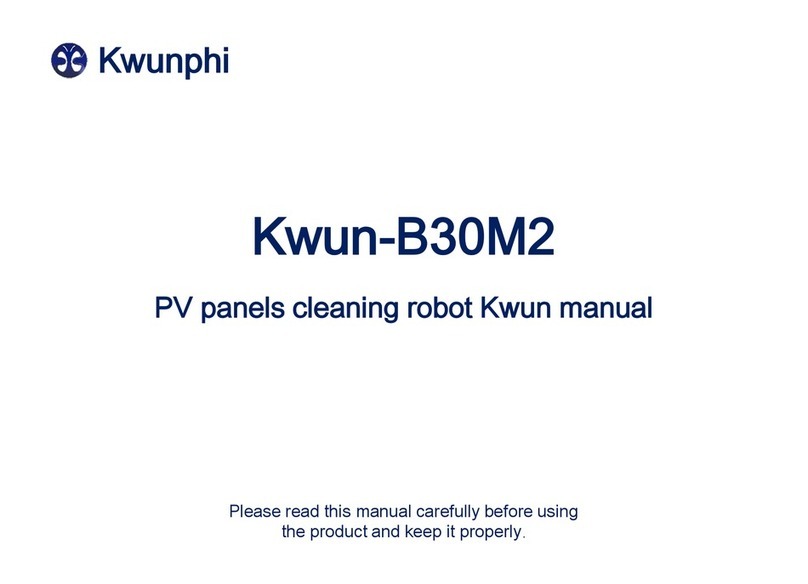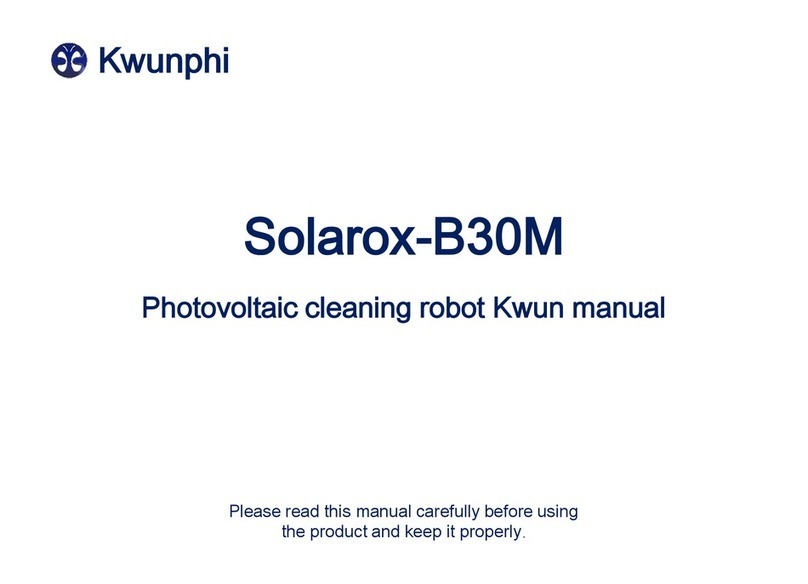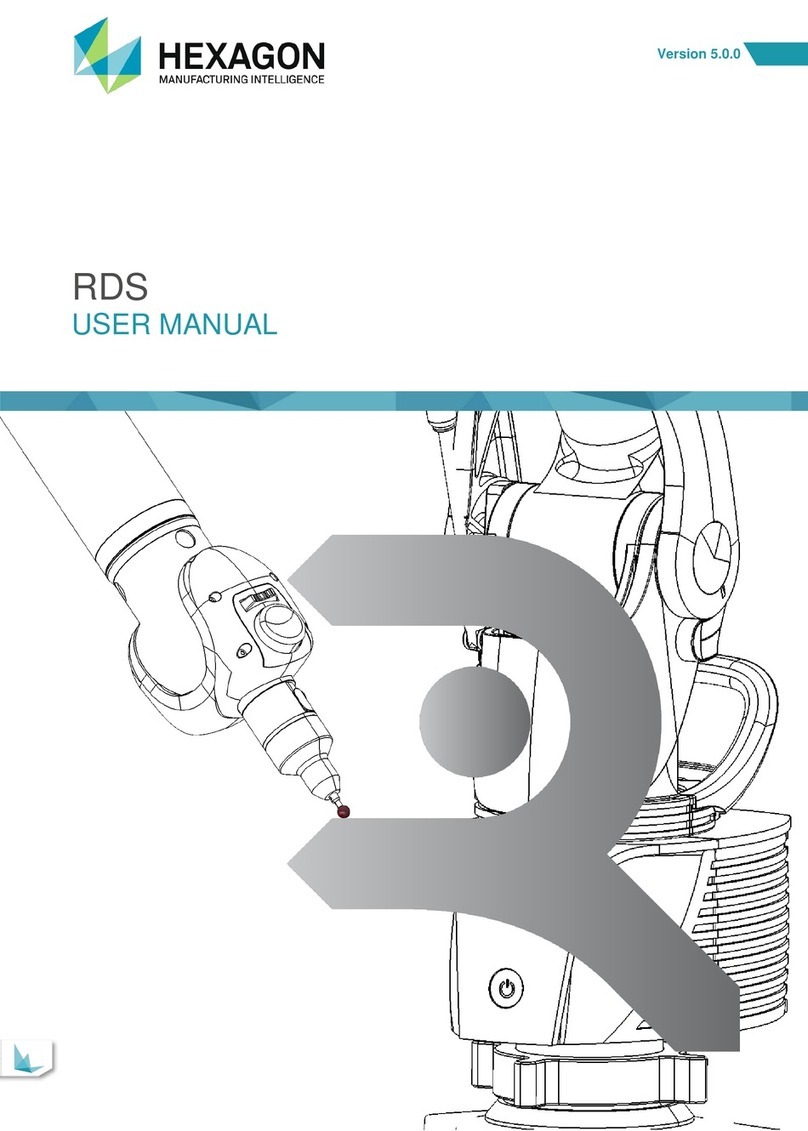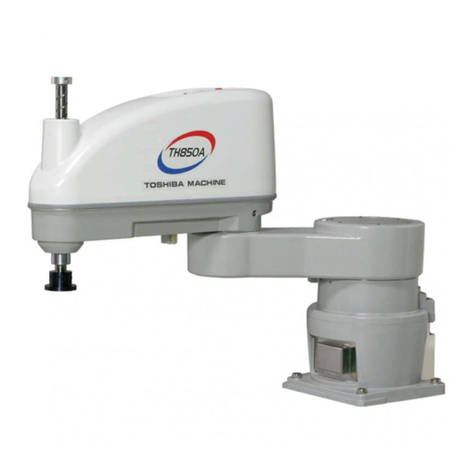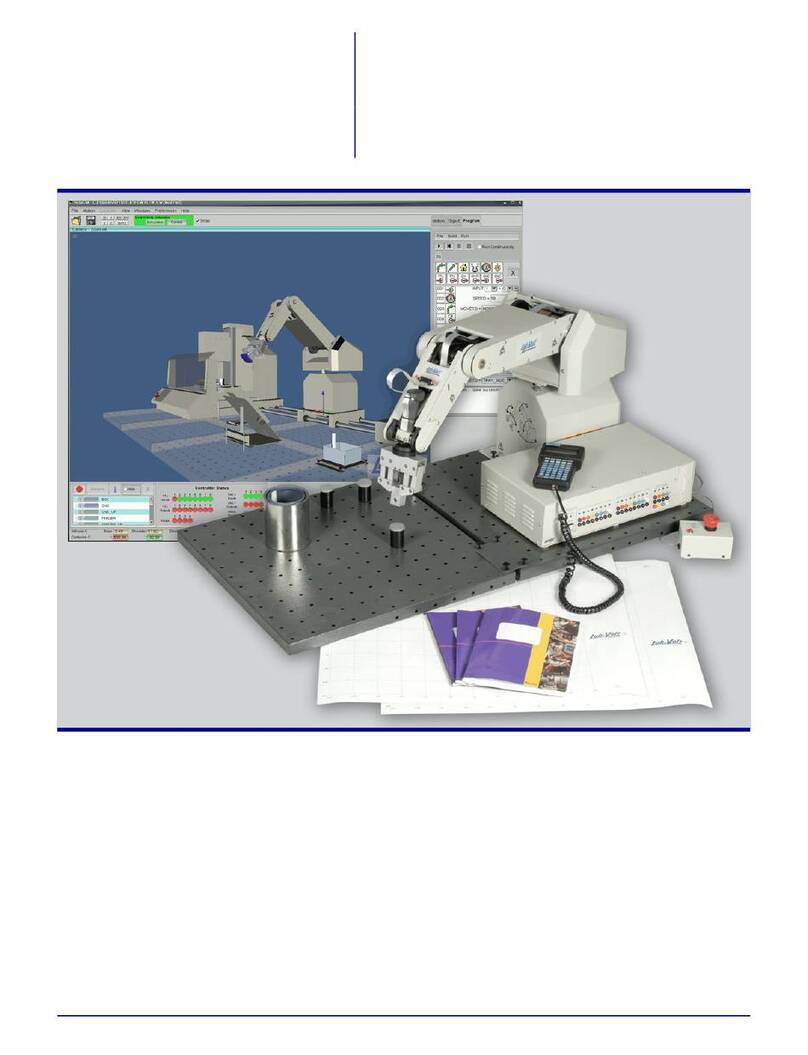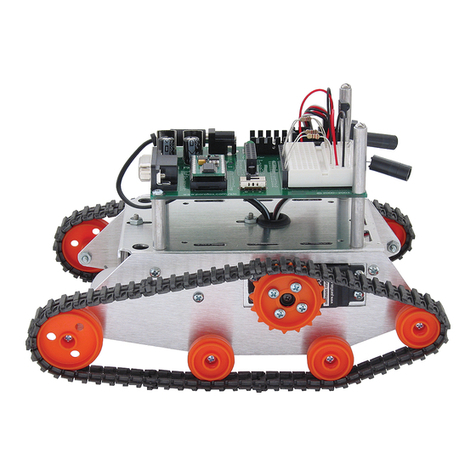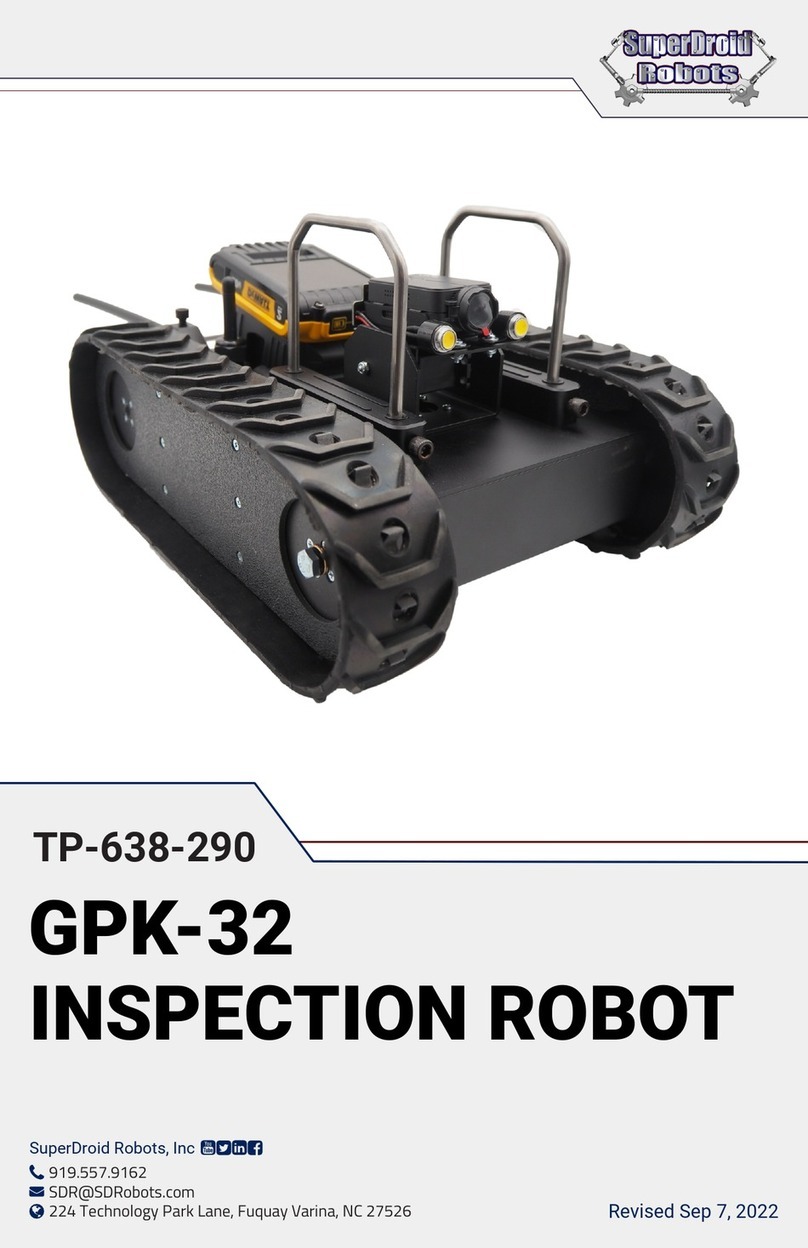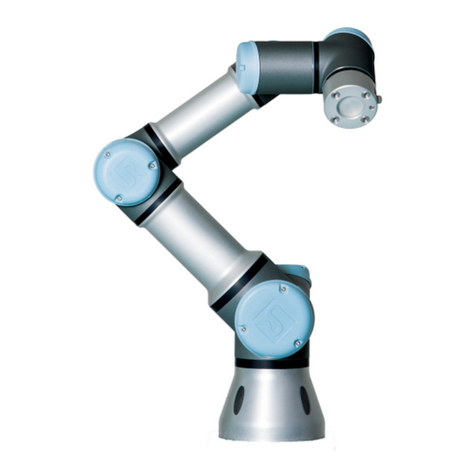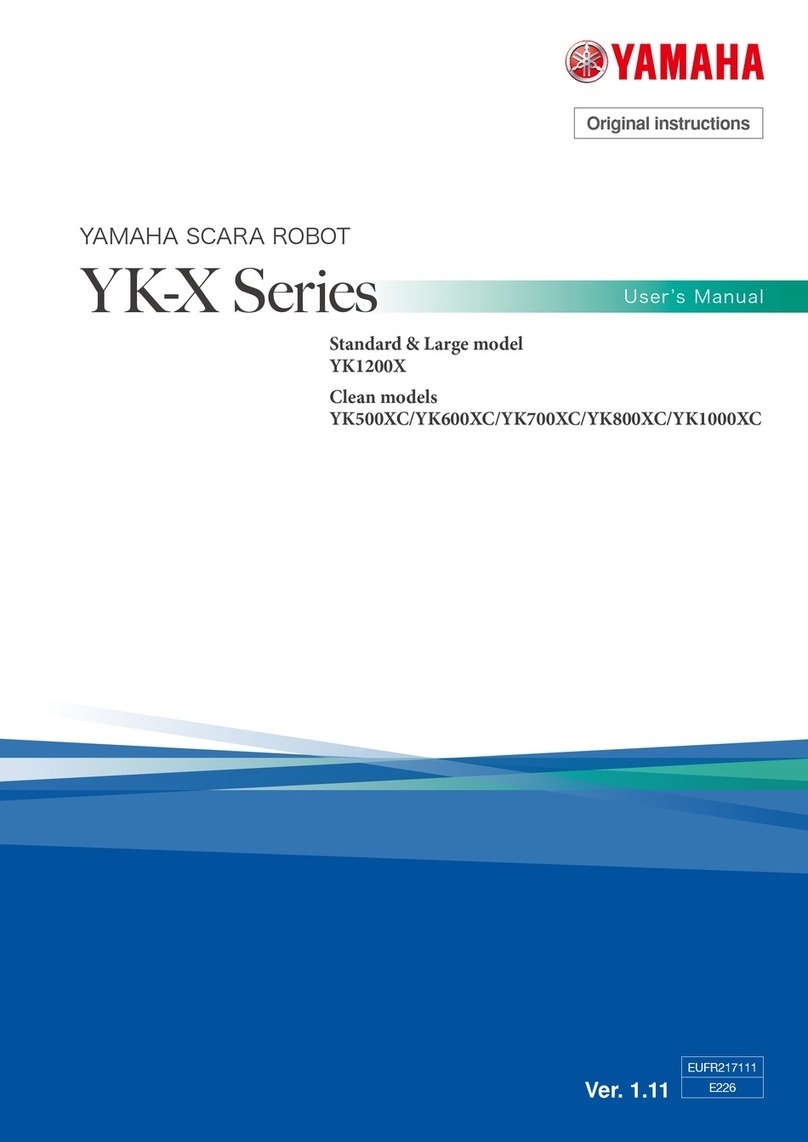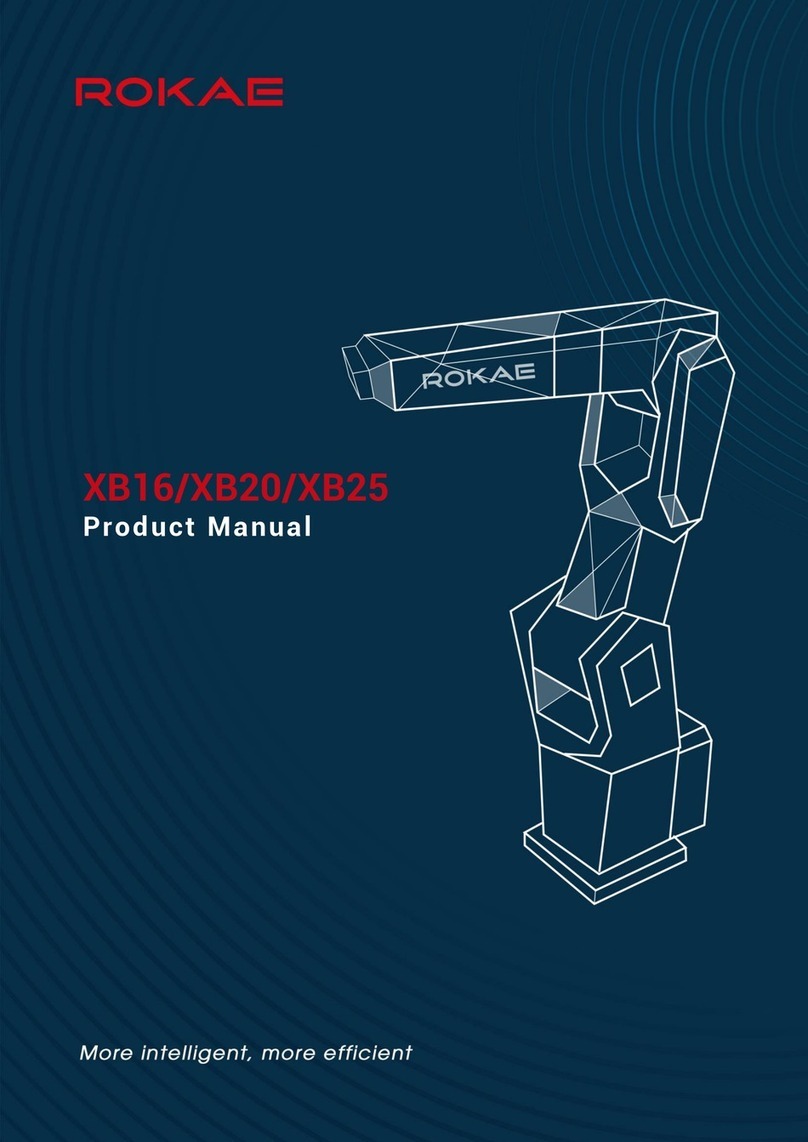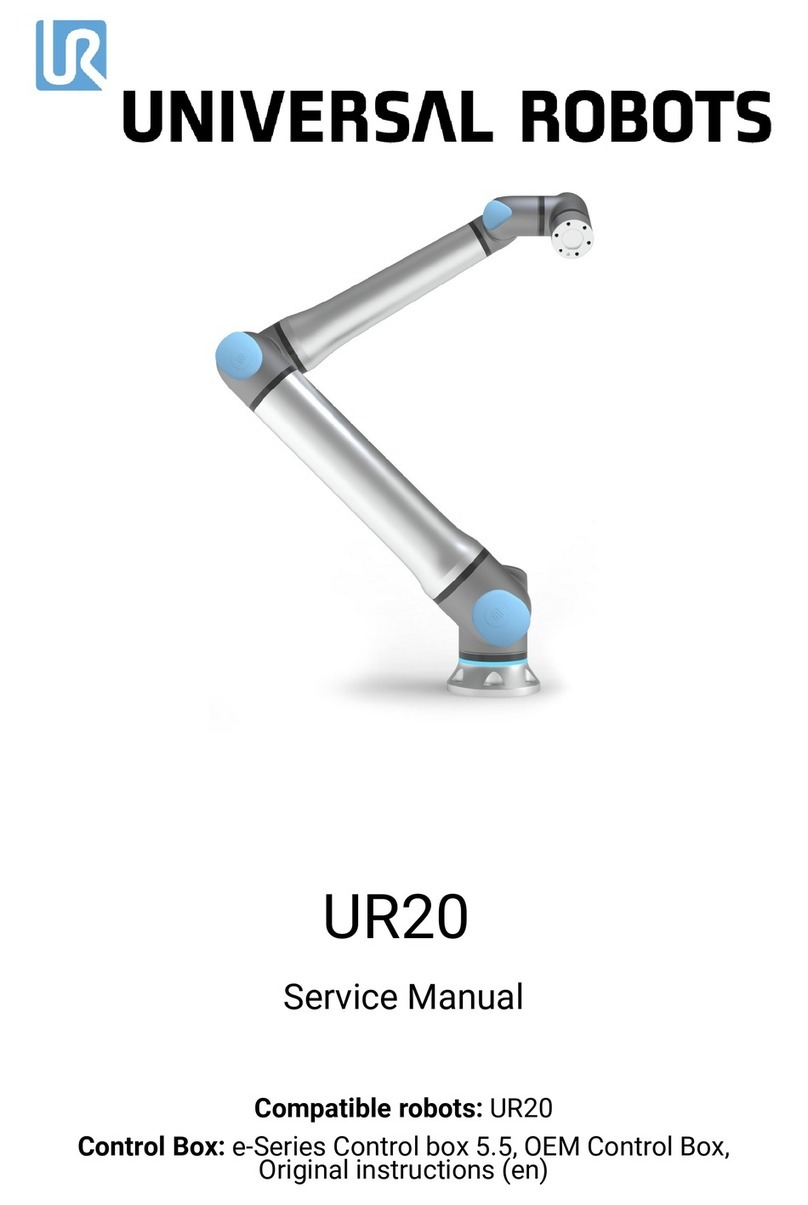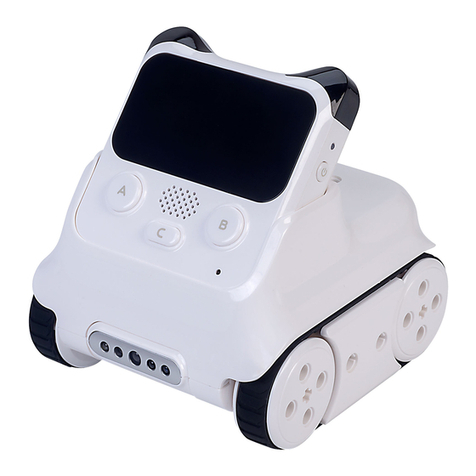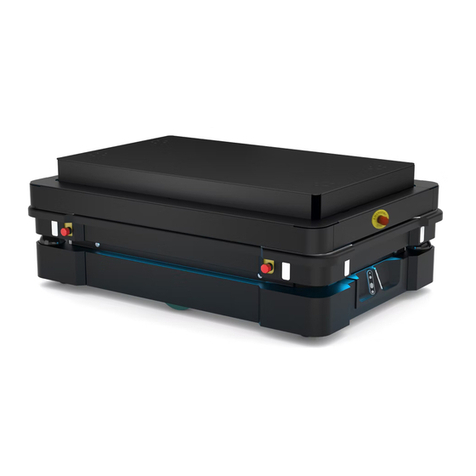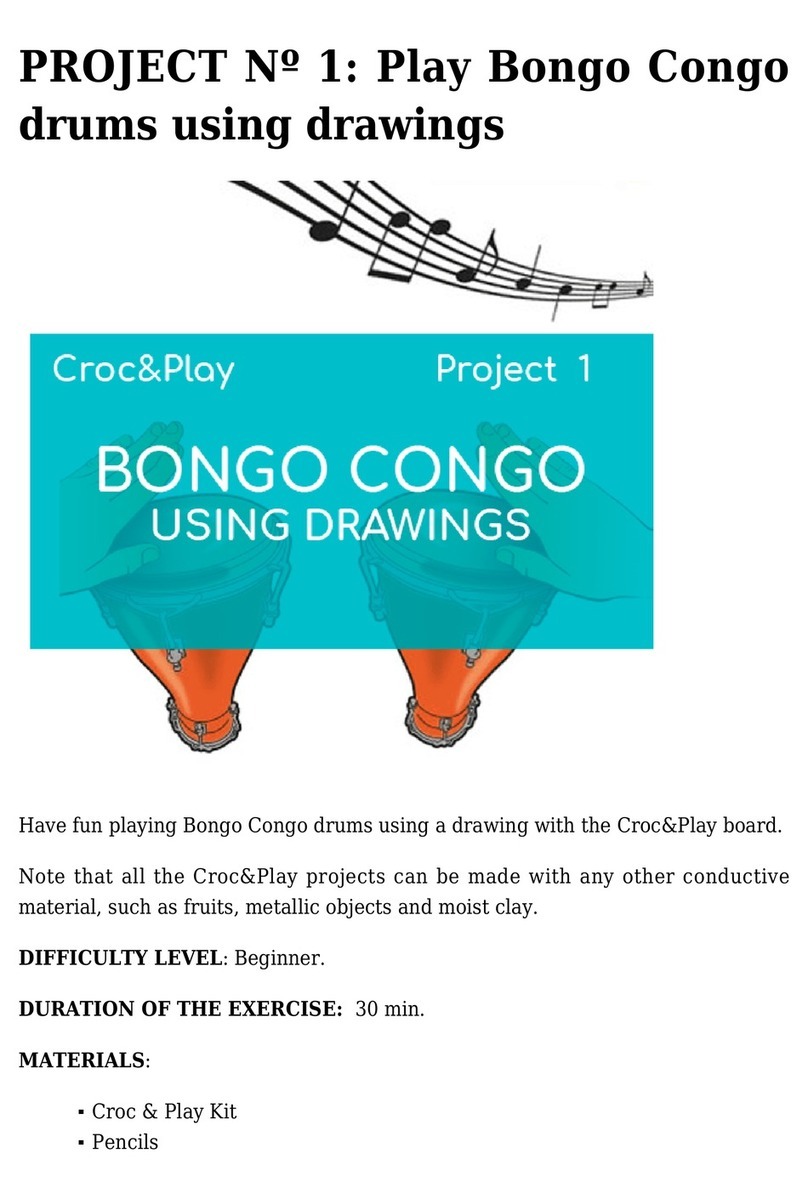Kwunphi Kwun-B20L User manual

Kwun-B20L
PV panels cleaning robot Kwun manual
Please read this manual carefully before using
the product and keep it properly.
Kwunphi

Kwunphi into possible, Kwunphi into habit.
堒出可能,堒成习惯

Directory
1.Safety instructions ....................................................................................................................1
2.Attention ...................................................................................................................................1
3.Product introduction ………………………………………………………….................................. 2
4.Use guide .................................................................................................................................6
5.APP Use guide .......................................................................................................................21
6.Replacement of accessories ..................................................................................................27
7.Daily cleaning and maintenance .............................................................................................29
8.Recommended Operating Conditions ....................................................................................30
9.Troubleshooting......................................................................................................................31
10. Limited warranty Policy........................................................................................................32
11.Warranty and after-sales service ..........................................................................................36

1. Safety instructions
Before using this product, please carefully read all safety and operation instructions in this manual. Operation in violation of
the manual may cause danger or damage to the equipment.
2. Attention
1.Use the product as instructed in the manual. Only use the accessories recommended or sold by the manufacturer.
2. Make sure the supply voltage meets the voltage specified on the charger.
3. Before using the product, make sure that the battery and shell have been installed in place, and the battery power is
sufficient.
4. If the power cord is damaged, it must be replaced by the manufacturer, its maintenance department or a professional to
avoid danger.
5. Please turn off the power switch or pull the plug from the power socket before cleaning and maintaining the product.
6. In case of power failure, waterproof covers must be installed on connectors and sockets, and ensure that the waterproof
covers are clean and free of foreign matter.
7. Before placing the Kwun in the initial position of the photovoltaic array, ensure that the surface of the initial position is clean
in advance to prevent the product from slipping or falling due to serious pollution of the track.
8. After cleaning job, clean the anti-fall sensor with a wet towel and then wipe it with a dry towel to prevent excessive
accumulation of dust and affect the perception.
9. Before discarding the product, turn off the power switch and remove the battery. Remove and discard the battery in
accordance with local laws and regulations.
10. If the product is not used for a long time, please turn off the power switch and power off the product.
11. Wear ESD gloves when touching the Kwun.
12. It is only used in the PV array with an inclination of less than or equal to inclination 20°(dry brush) or 10 °(wash) , the PV
array edge range of 50cm is free of obstacles and the lowest point is suspended above 10cm.
13. Safety protection devices such as guardrail and protective shed should be built around the photovoltaic array to prevent
safety accidents.
14. When the product is operated at a height above 2m (including 2m) which is likely to fall, it shall follow the Technical
Specification for Safety of Operation at Height in Construction.
15. Do not use the product when it cannot work normally due to drop or damage. To avoid injury, the product should be
repaired by the manufacturer or its after-sale service.
16. Please use the product according to the instructions in the manual. Kwunphi company is not responsible for any loss or
injury caused by improper use.
1

2
3. Introduction
* Due to the needs of continuous improvement of the product, this material product is subject to the physical, our company reserves the right to update the product.
No. Name Quantity
1Kwun body(model:Kwun-B20L)1 pcs
2Track 2 pcs
3Battery 2 pcs
4Recharger 1 pcs
5Kit (M4 Inner hexagon Wrench &
Clamp pliers & cross screwdriver) 1 pcs
6Shoulder straps 1 pcs
7 Self cleaning stuff 8 pcs
8Rolling brush assembly (default type D) 2 pcs
9Operating instruction 1 pcs
3.1 Name&Model
Name:Kwun
Model:Kwun-B20L
3.2 Parts list
①②
* According to different areas, choose different models of chargers.
*Self cleaning stuff is only used for dry brushing, please remove it
by yourself when washing.
⑨
③
④
⑤
⑥
⑦
⑧

3
* The illustrations in this manual are for reference
only. The actual appearance shall prevail.
3. Introduction
Water cube The battery 4G network module M4 hexagon socket wrench
D type roller brush support The charger Shoulder straps M5 inner hexagon wrench
E type roller brush support track Dust cover for central suction cup M8 inner hexagon wrench
D type roller Shading brush Circlip pliers 5.5-7 open end wrench
E type roller Vacuum filter 4 x 100mm phillips screwdriver 8-10 Open end wrench
3.3 Optional accessories
3.4 Roll brush type description
Type Effective cleaning width Applicable PV panel size type
D 800mm M2(156mm) G1 (158mm) M4(162mm) M6(166mm) M10(182mm)
E 940mm G12(210mm)
Model Kwun-B20L
Operating system TianyunOS
Battery 25.2V 15.3Ah
Recharger out 29.4V⎓5A
Battery life ≈270min
Charging time ≈180min
Weight 17.15Kg / 19.8Kg(Included battery)
Size L 594mm * W 526mm * H250mm
3.5 Specification
* The actual data of battery life may be different due to different use environment, different cleaning tools, battery loss during long-term use, etc.
* Equipment weight and size may vary slightly depending on material supplier, etc.

3. Introduction
3.6 Water Cube (Accessories)
3.6.1 Water Cube connection
1. Fix the rotating table module base of the Rubik's Cube to the mounting hole
of the shell through M4 captive bolts.
2. Fix the pipe support frame of the Rubik's Cube nozzle module to the roller
brush support using M4 screws and nuts.
3. Connect the external water pipe to the pipe (M14 internal thread) on the
upper end of the rotating table module through a quick connector.
3.6.2 Tool
Tightened or Adjusted parts Tool
U-bolt 10 Open end wrench
Fixed screw nut for pipeline
support frame
7 Open end wrench M4
hexagon socket wrench
Fixing screws for PVC pipe M8 inner hexagon wrench
Set screws and nuts for PVC
pipe supports
8 Open end wrench M5 Inner
hexagon wrench
One M5 inner hexagon wrench, one M8 inner hexagon wrench,
one 5.5-7 open end wrench, one 8-10 open end wrench.
U-bolt Fixing screws for
PVC pipe
3.6.4 External device
Purchase quick connection connection, water pipe
and hydraulic press by user.
Collocation demonstration:
Fittings with M14 external thread to M22 external thread
Water pipe with M22 external thread quick connection
hydraulic press
3.6.3 Tightening and adjustment
PVC pipe
support
Pipeline
support frame
Hydraulic press
Rated power 900W
Rated pressure 100bar
Inner φ is about 14.8 mm
External M22*1.5(inner hole 15mm) to
external 14*1.5 conversion connector
4

5
No. Module
1 Kwun body
2 Case
3 Battery cover
4 4G Network module
5
Indicator light & Button
6 Handle
7 Crawler belt
8 Shading brush
9 Roller bracket holder
10 Roller bracket
11 Rolling brush
connection part
12 Roller
13 Water cube
14 Water cube-mounting
15 Water cube-holder
16 Ultrasonic sensor
17 Straps buckle
18 Exposure box
19 Central suction cup
3. Introduction
3.7 Module specification
②
③
④
⑥
⑦
⑧
⑨
⑪
⑫
⑯
⑰
⑬
①
⑩
⑲
⑤
⑮
⑭
⑱
⑧
⑰
⑯

4. Use guide
4.1 Application scenarios
1. Pv array tilt less than 20°(dry brush) or 10°(wash)。
2. The nadir of the photovoltaic array is more than 10cm.
3. The edge of the photovoltaic array is free of obstacles within a 50cm range.(If only the top is obstructed, you can use
a custom limit on the number of rows to do not clean the top row )
4. The PV arrays are spaced less than 4cm apart.
5. The height difference of photovoltaic modules is less than 4cm.
6. There are white gaps between the photovoltaic modules' cells.
7. The supported types of photovoltaic panel are as follows:
Main grid line(BB)
Type Size(mm) PCS
2BB Full size 156 60
3BB Half size/Full size 156/158
60/72
4BB Half size/Full size 156/158
60/72
5BB Half size/Full size 156/158
60/72
6BB Half size/Full size 156/158
60/72
MBB Half size
162/166/182/210
60/72
The interval between PV array is less than 4cm
The height difference is less than 4cm
<20°
The lowest point of the PV panel suspension is greater than 10cm
Obstacles such as walls and pipes should be within 50cm of the
top edge of photovoltaic array
* In the case of self-identification, MBB default M6/166mm size, which can be customized.
* At a singular scenario, you are advised to customize the scenario mode.
6
* Due to the needs of continuous improvement of the product, this material product is subject to the physical, our company reserves the right to update the product.
* Safety protection devices such as guardrail and protective shed should be built around the photovoltaic array to prevent safety accidents.
* When the product is operated at the height above 2m (including 2m), which is likely to fall, it should follow the Technical Specification for Safety of Operation at High Places in Construction.
There are no obstacles within 50cm of photovoltaic array edge

4. Use guide
4.2.1 Light color instruction
4.2.2 Buzzer
Ringing times One ringing Continued ringing
Content Operation mode switching Actuator error fault alarm
The bottom layer of the communication change Operation abnormal alarm
Pilot lamp Appearance Content
Red lamp1
Normally off Drive sensors are all normal
Normally on
The battery is low, need to be charged or replaced
During the operation, the driving failure will automatically switch to standby mode,
which needs to be restarted and repaired
2.50Hz flashing There is an abnormality in the left ultrasonic anti-fall sensor
1.25Hz flashing There is an abnormal ultrasonic drop sensor on the right side
0.50Hz flashing There is an abnormality in the pressure or temperature detection module
Red lamp2
Normally off/Normally on Internal communication of the device is normal/failed
flashing
When standby, if startup conditions are not met, the device shall be completely
placed on the PV surface with an inclination less than 20°
When turning, the central sucker is lowered to complete the sucker, but the
adsorption effect is not good, unable to meet the turning conditions
Green lamp Normally off Standby
flashing Autonomous operation/remote control status
Yellow lamp Normally off/Normally on Network status is normal/abnormal
Red lamp1 Red lamp2 Green lamp Yellow lamp
7
4.2 Interactive instructions

4.2.4 Autonomous mode
4.2 Interactive instructions
4.2.3 Button
Power button
Power on or off
Start/Standby button
Start or cancel autonomous jobs
Turn off the buzzer alarm
Starting point Adjacent angle
First row array
Second row array
First row array
(In case of a obstruction,
Software can be defined
not clean)
Barriers, such as walls and pipes, are within 50cm of the top edge of the photovoltaic array
8
4. Use guide
Content Option Timing Default
Type of PV module Full size/Half size Standby Full size
Grid line, size, number of pieces
Automatic recognition or custom patterns standby Automatic recognition
Anchor pattern Berthing at start point/Adjacent angle Standby Berthing at start point
Cleaning tasks 1~10/999 times Online 1 time
Array row limit No limit/1~100 rows Standby No limit
Cleaning mode Array/Single bottom Quick/Normal/D
eep/Severe
Standby Array Normal

9
1. Ensure that the battery is not working. Take out the battery or spare
battery.
2. Insert the output port of the charger into the XT60 port of the battery.
3. Insert the input plug of the charger into the 220V power socket, and
then turn on the power supply of the socket.
4. Wait until the red light of the charger turns on and the battery starts
charging.
5. It takes about 3 hours to fully charge, when the red light of the charger
is off, the green light is on, and the charging is finished.
6. Turn off the power from the socket and remove the input plug of the
charger.
7. Remove the battery from the outlet of the charger and store it.
4.3.1 Charging
4.3.2 Battery installation
1.Remove the bolts securing the battery cover using an M4 hexagon key.
2.Align the battery, and connect the battery outlet to the XT60 port on the
opposite side of the connection port.
3. Close the battery cover and tighten the bolts using an M4 hexagon key.
4. Use guide
4.3 How to Use batteries
* For more tutorials and videos on how to use Kwun, please visit our official website

10
1. Hold the roller brush holder and lift the roller brush holder. Insert the flange bearing corresponding to the rotating guide rail connecting the roller brush holder.
2. Ensure that the air socket is powered off, open the waterproof cover, connect the air socket according to the limit prompt, and complete the installation.
②③
①
⑤④ ⑥
Flange bearing
Guide rail
1. Open the battery cover and remove the 4G network cover using a Phillips screwdriver. 2. Take out the 4G network module, remove the cover, insert the Nano SIM card, and restore the installation.
4.4 How Do I Use 4G Network Modules
Nano SIM card
① ② ③ ④
4.5 How to Use roller brush
* For more tutorials and videos on how to use Kwun, please visit our official website
4. Use guide

* Do not install the limit bolt of the roller brush assembly askew, otherwise the screw hole will be damaged.
4.5 How to Use roller brush
4. Use guide
* In double roller brush cleaning mode, roller brush components are not front and rear, and can be exchanged at will.
* Do not use single rolling brush cleaning mode to avoid falling risks.
* Make sure the aviation plug is fully inserted according to the limit prompt and the spring button is up.
11
* Install the rolling brush before powering on the equipment,
otherwise the rolling brush may not complete the operation.
* For more tutorials and videos on how to use Kwun, please visit our official website

4. Use guide
4.6 How to use this product
4.6.1.3. Check that the battery cover is firmly closed.
4.6.1.2. Check whether there are foreign bodies under the anti-fall sensor to prevent abnormal anti-fall perception. (It is strictly
forbidden to be squeezed by external forces)
4.6.1 Pre-operation inspection
4.6.1.1. Check track surface cleanliness to prevent significant loss of grip. (It is forbidden to lift the upper hanging part of the track
to prevent deformation and damage of the front and rear axles)
12

4. Use guide
4.6 How to use this product
4.6.1 Pre-operation inspection
4.6.1.5. Check whether the cleanliness of the camera lens and the body of the exposure box and the shading plate
completely cover the projection plane area of the exposure box to prevent sunlight and dust from interfering with the camera.
4.6.1.4. Check the cleanliness of the suction cup surface at the bottom of the central sucker assembly to prevent a significant reduction in grip.
4.6.1.6. Check the type of roller brush and whether it is deformed to prevent the cleaning effect. (Refer to "Description of Brush
Component Types" on page 3 for usage scenarios corresponding to brush types.) * When the roller brush is idle, Should be on the
motor, erect rely on placing, Avoid compression
deformation of roller brush bristles.
* If the bristles are deformed under pressure for
a long time,
It will cause the bristles to become irreversibly
deformed.
* When moving the roller brush, special handle
should be raised. It is strictly forbidden to pull the
roller brush shaft to prevent deformation and
damage of the roller brush shaft.
13
* For more tutorials and videos on how to use Kwun, please visit our official website

4.5.2 Placing
4.5 How to use this product
1. The number of turns is equal to the number of turns in a single row multiplied by the number of array rows.
3. Generally, use the side that is easy to carry and operate the device as the starting end, that is the bottom of the array.
Vertical layout(V)
Three turns in a row
2. Select the starting point with the least number of turns for H autonomous operation.
Horizontal layout(H)
Six turns in two rows
Turn times of V autonomous operation= 8 Turn times of H autonomous operation= 10
A row requires two turns
Crossing requires two turns
* Ensure that the surface of the initial position is clean to prevent the product from slipping or falling due to heavy contamination
of the tracks
14
4. Use guide
Longest edge of array Longest edge of array

4. Use guide
4.6 How to use this product
4.6.3 Start the Kwun
1. Corner placement
Select the starting point with the least number of turns for
horizonal autonomous operation.
Kwun is placed on the bottom corner of the left and right
sides of the photovoltaic array that meets the requirements.
3. Position calibration
Adjust the horizontal central axis of the device to the spacing line of the
cells in row 2 and row 3 in the lower corner, and the horizontal central axis
to the spacing line of the cells in row 2 and row 3 in the lower corner.
2. Turn on the power
Press the power button to start the device. When the
first red light is often off (the buzzer rings once), the
device is normal and enters the initialization state.
4. Start the job
When the green light is always on and the red light is often off, the device
is normal and the initialization is successful, then press the Start/Standby
button to make the device start autonomous operation
PV panels apart less than 4cm
PV panels height difference less
than 4cm <20°
The nadir of PV panel is suspended over 10cm
* Ensure that the surface of the initial position is clean to prevent the product from slipping or falling due to heavy contamination
of the tracks 15

16
After the start and identification is completed, the Kwun climbs up to the top of the photovoltaic array and tries the direction.
After the direction is determined, the operation begins. The Kwun turns around to span until the array is covered, and chooses
the termination according to the berthing mode.
Second row array
First row array
Berthing at
Starting point
4.7 Function application
4.7.1 Unmanned cleaning / 4.7.1.1 Array
Third row array
Second row array
First row array terminus
Berthing at
Adjacent angle
Starting point
4. Use guide
4.7.1 Unmanned cleaning / 4.7.1.2 Single bottom
After the start and identification is completed, the Kwun independently operates forward to the edge of the photovoltaic array to
complete the single bottom edge operation. (Recommended for cleaning array ash zone)
terminus
Starting point
*If the bottom edges are stubborn stains, it is recommended to use single bottom/severe cleaning mode for cleaning.

17
4.7 Function application
4.7.2 Low voltage return
In the process of autonomous operation, when the battery power is low, the Kwun will automatically enter the low-
voltage return mode and return to the starting position.
4.7.3 Breakpoint memory
Choose to skip part of the cleaned area, find the location where the last job was interrupted, and start another job from there.
•To disable this function, press the Start/Standby button during the climb.
•Restart the breakpoint memory function after the next interruption.
Low voltage alarm
Ignore cleaned areas
4. Use guide
Table of contents
Other Kwunphi Robotics manuals
